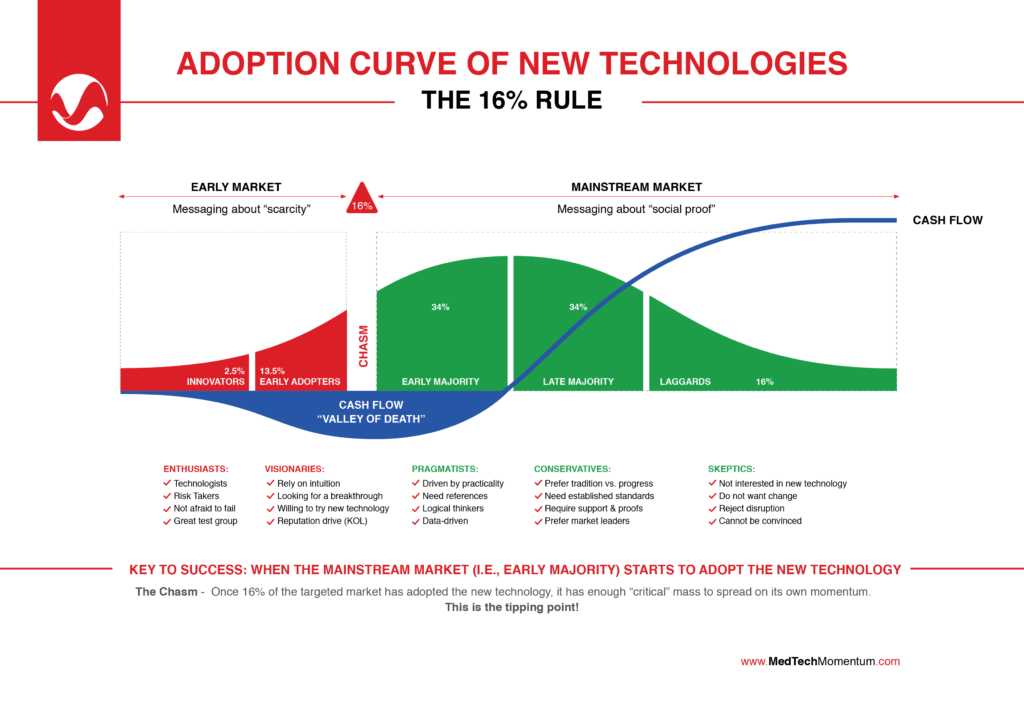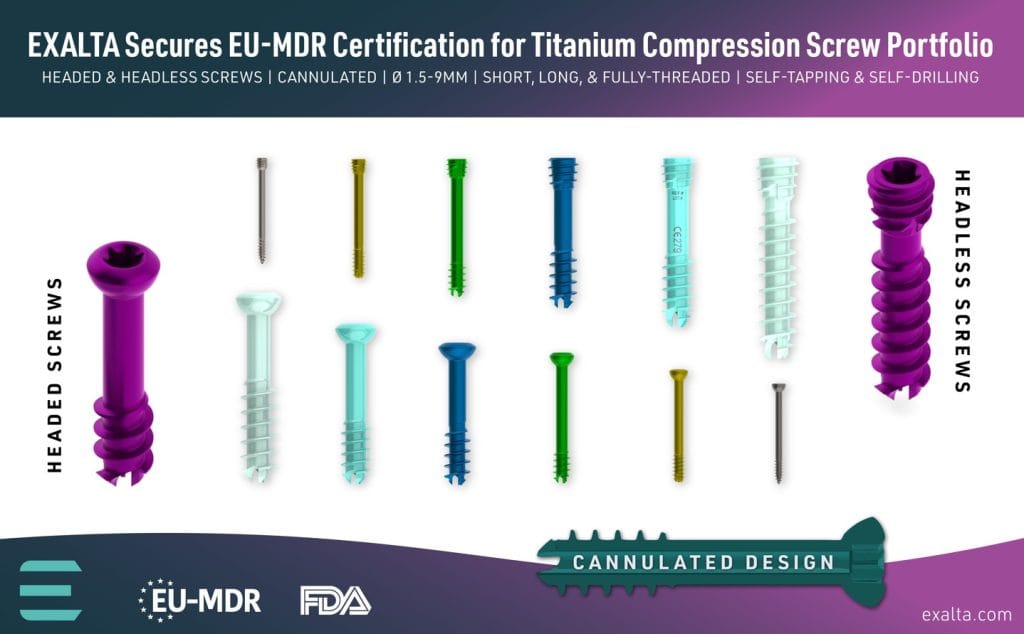The Adoption Curve of New MedTech Technologies: Your Blueprint for Sustainable Growth


The MedTech sector, a field pulsating with groundbreaking technologies, faces a shared existential question: “How does an innovation successfully transition from a concept to a commercialization?” Drawing insights from Geoffrey Moore’s seminal book, “Crossing the Chasm,” the answer can be found in the MedTech Adoption Curve of New Technologies. This framework delineates the nuanced journey of an innovation as it traverses the path from its inception to broad market acceptance.”
For MedTech leaders, embracing this curve isn’t merely a theoretical exercise. It’s a practical approach that guarantees alignment between business objectives and marketing communication. Understand your company’s position in the curve ensures that the messaging resonates with the intended audience. A strategy that misses its target audience is bound to fail. In contrast, the right message, delivered to the right audience, at the right time is poised for success.


Anatomy of the Adoption Curve:
- Innovators (2.5% of the market): The pioneering spirits who thrive on novelty. They’re your first customers, driven by the excitement of cutting-edge technology. Picture the early embracers of robotic-assisted surgeries, driven by the novelty and transformative potential.
- Early Adopters (13.5% of the market): These are the trendsetters in the medical community. They rely on their intuitive grasp to experiment with novel solutions and exert substantial peer influence.
- Early Majority (34% of the market): A more pragmatic bunch, they await proven applications and concrete data. They need the assurance that the technology has been vetted and validated. Reaching the Early Majority in the technology adoption curve signifies a product’s transition from niche to mainstream, ensuring steady revenues and market validation.
- Late Majority (34% of the market): Traditionalists by nature, they wait until a technology becomes a standard in the industry, desiring comprehensive support structures. While the Early Majority provides the momentum, the Late Majority offers depth, stability, and longevity in the market, reinforcing a product’s dominant position and ensuring sustained success.
- Laggards (16% of the market): Resistant to change, they’re the last to adopt and often do so only when the technology becomes unavoidable. By their very nature, they are late to the game, and the effort required to bring them on board often outweighs the benefits.
Sandwiched between the Early Adopters and the Early Majority is the CHASM, a treacherous phase where many promising technologies disappear.


The CHASM: The Tipping Point!
The CHASM represents a significant inflection point for all new technologies, no matter the size of the organization. Initial enthusiasm from Innovators and Early Adopters may bring in preliminary revenue, but as the technology approaches the Early Majority, the scale of operations expands. This expansion demands substantial investments in production, sales, marketing, training, and more.
For MedTech firms, this phase requires financial foresight. Adequate capital needs to be procured or allocated to ensure smooth sailing across this chasm. If a company fails here, its technologies will never reach the masses they were designed for and will fall into obscurity.
Strategizing with the Adoption Curve
Understanding where you stand on the adoption curve is crucial for crafting effective marketing and business strategies:
- Tailored Messaging: In the initial stages, marketing should highlight the novel capabilities of your technology. As the product moves towards mainstream adoption, marketing efforts should pivot to emphasize peer endorsements, tangible benefits, and data-backed success stories.
- Resource Allocation and Marketing Focus: Startups, targeting Innovators, may direct resources towards product innovation and niche marketing campaigns. In contrast, established companies targeting the Early Majority should prioritize broader marketing campaigns, developing vast distribution networks, and ensuring robust after-sales service.
- Risk Forecasting and Marketing Adjustments: Each segment of the curve presents unique challenges and opportunities. Being cognizant of these allows for informed marketing decisions, aligning campaigns with shifting market expectations, and circumventing potential pitfalls.
How does The Adoption Curve of New Technologies Applies to International Market Expansion?
Achieving market leadership in one market does not inherently translate to instant success in another. Every market has its unique set of characteristics, consumer behaviors, and competitive scenarios. As companies venture into new territories around the world, they often find themselves re-navigating the familiar stages of the adoption curve. It can be challenging!


For instance, a product that’s reached the Late Majority in its original market might only be at the Innovator stage in a new demographic or geographic sector. For instance, a product that has reached the Late Majority in its original market may still be considered an Innovator in a new demographic or geographic area. In this situation, marketing and messaging strategies need to be recalibrated, products may need to be adapted, and fresh strategies for engaging customers must be implemented. Failing to recognize this can lead to misaligned expectations and resource misallocations.
For market leaders aspiring to expand internationally, understanding the nuances of the adoption curve in each specific market is essential.
Follow us on LinkedIn for more insights and updates on the MedTech Industry.













